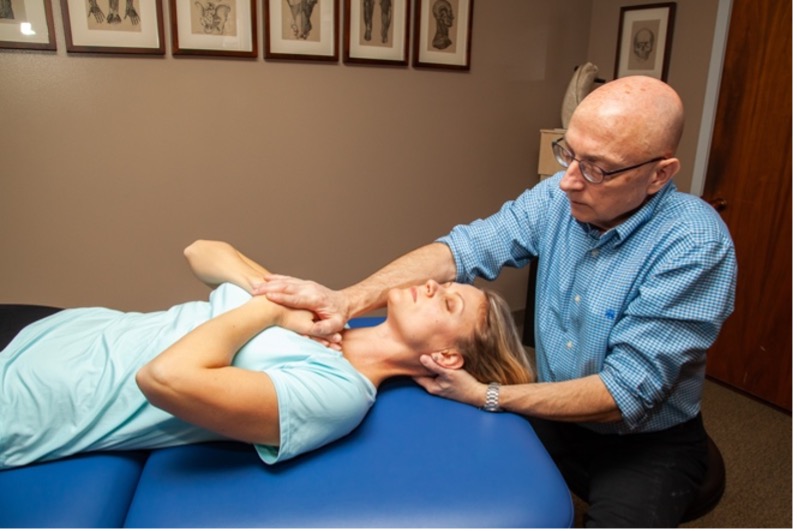Shielded Work for the Win

When beginning my manual therapy journey over 30 years ago, I was taught such work (myofascial release) must be done directly on the skin. It was said that if we worked over clothing, we were “releasing” clothing, not the fascia. Most complied with those requests, as group norms and tribal beliefs are powerful tools to bring a group under control. Lacking critical thinking skills, it never hit me back then to question this narrative. How do we know we are treating fascia when we work on the skin? What about everything else? Can we know that a particular style of touch and pressure is perfectly biased towards the fascia, excluding all else?
I tell a story in my workshops about an incident in manual therapy for voice and swallowing disorders class many years ago. At this time, I was still following the “work directly on the skin” narrative and instructed learners to place a hand directly on the skin over the sternum. Without going into the details about the whys of this work here, suffice it to say we were addressing issues related to swallowing and voice disorders and globus and GERD-related problems. (I’m sure my explanations needed updating back then!). I demonstrated the technique to a class participant and then broke up for the one-on-one lab, where everyone learned to apply the work. At that moment, a class participant came up and quietly said, “It’s not acceptable for anyone to put their hand on me in the way you described.” So, we problem solved.
In my many years as a clinician, I’ve used this treatment sequence on thousands of patients for a wide range of issues, all while placing my hand directly on the bare skin of the sternal area. With those many experiences come expectations of what patients will tell me while working on the sternal region. In that class, the SLP and I worked through some options. I had her place her hands over the area of intended contact, and, with permission, I placed a hand over her two hands and gently engaged in a caudal (towards the feet) direction stretch. After a short time, I asked what she felt. She replied with remarkably similar words and feelings as those thousands of patients with whom I had my hand directly on the skin. She got the identical experience without being triggered by a potentially inappropriate-feeling interaction.
Imagine the potential when a patient is not questioning our motives or being exposed to a potentially triggering experience. Think how much more open they are to change. Can you change?
Lesson learned. Question everything, even when it is not within the group norm to ask such questions. Create your path. When we look at touch from a wider lens, its effects are much more than what we believe we are doing to “issues in the tissues.”
Walt Fritz, PT

Sorry, comments are closed for this post.